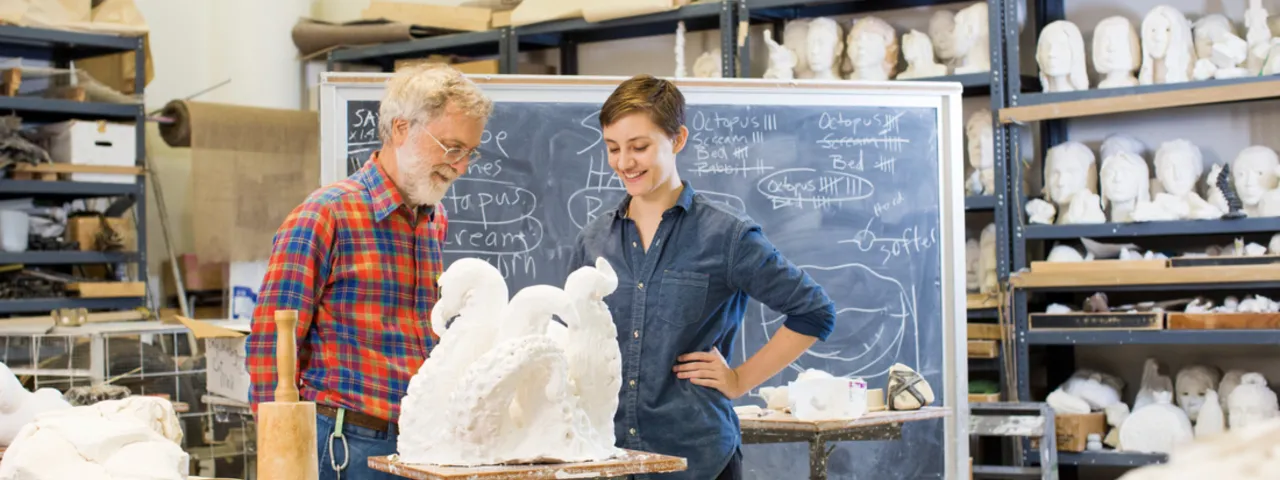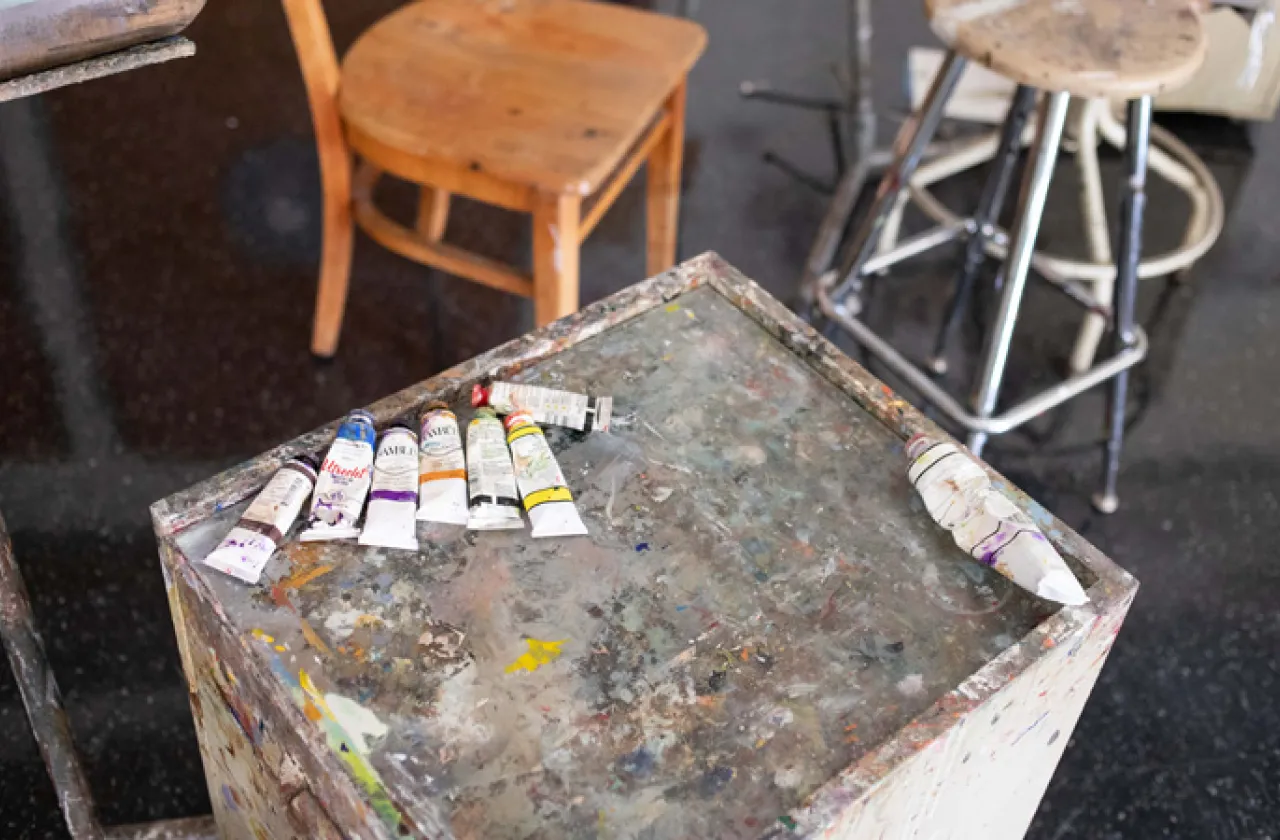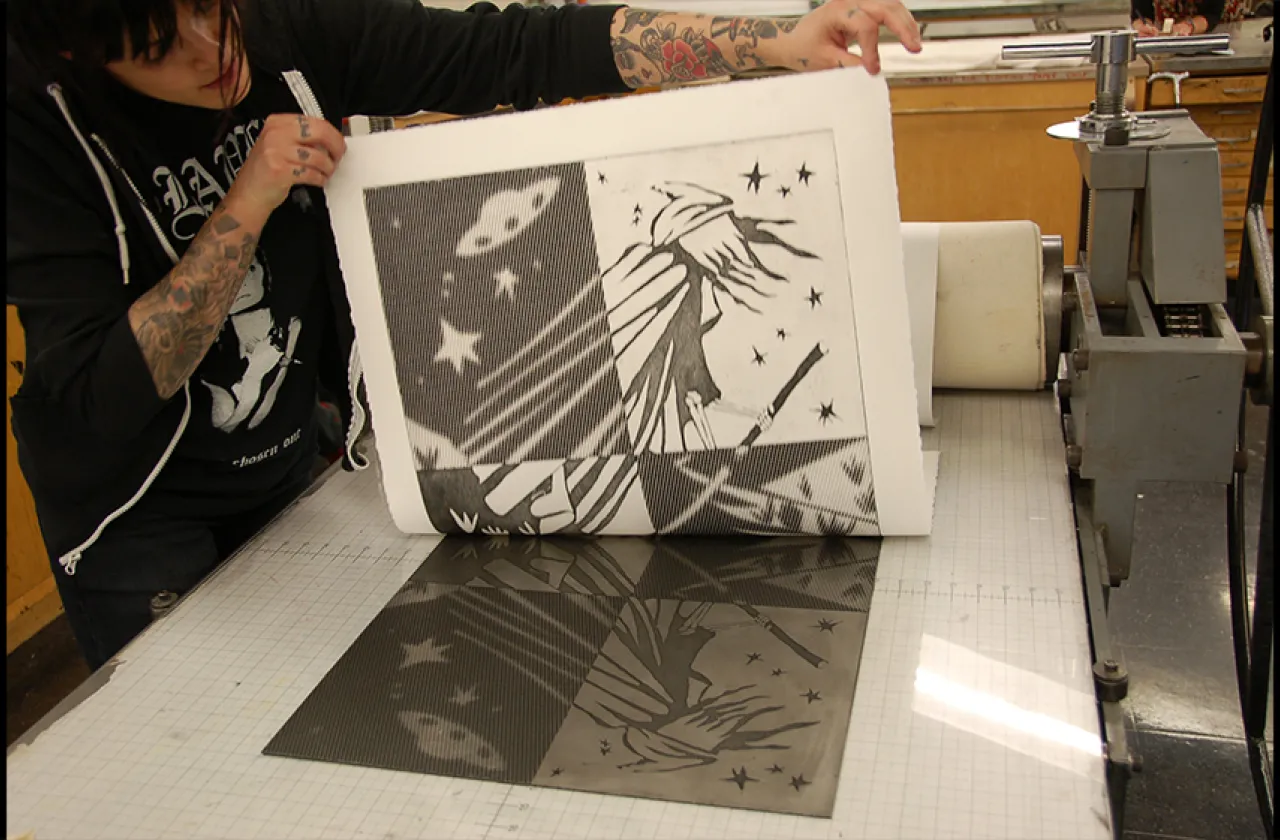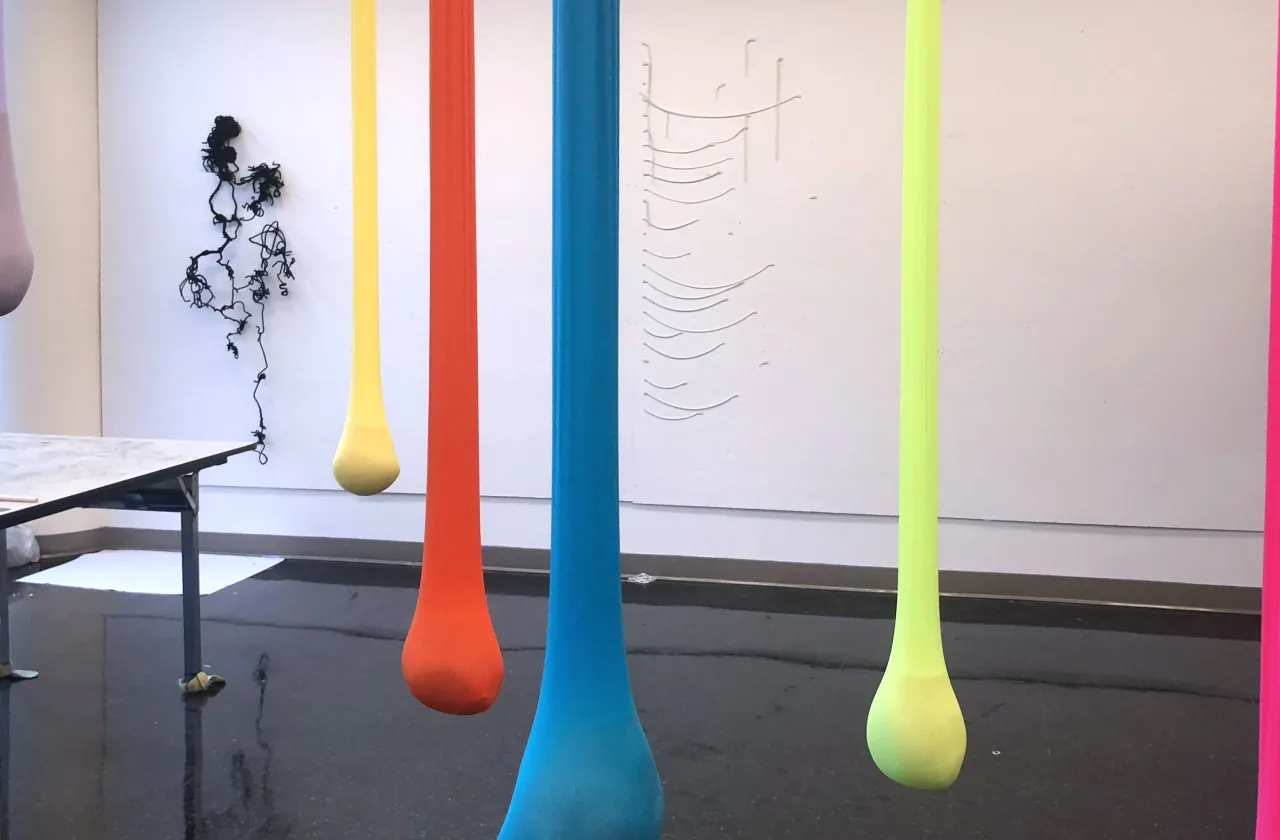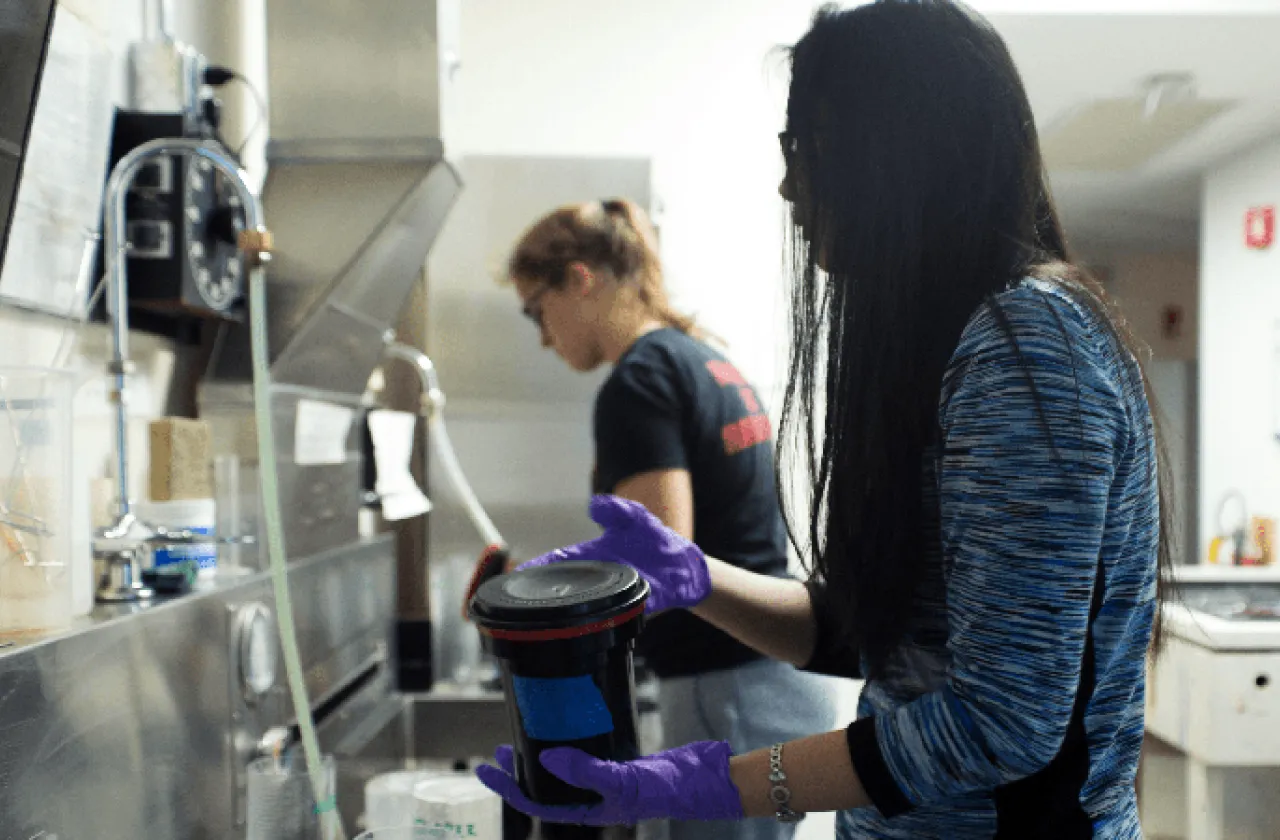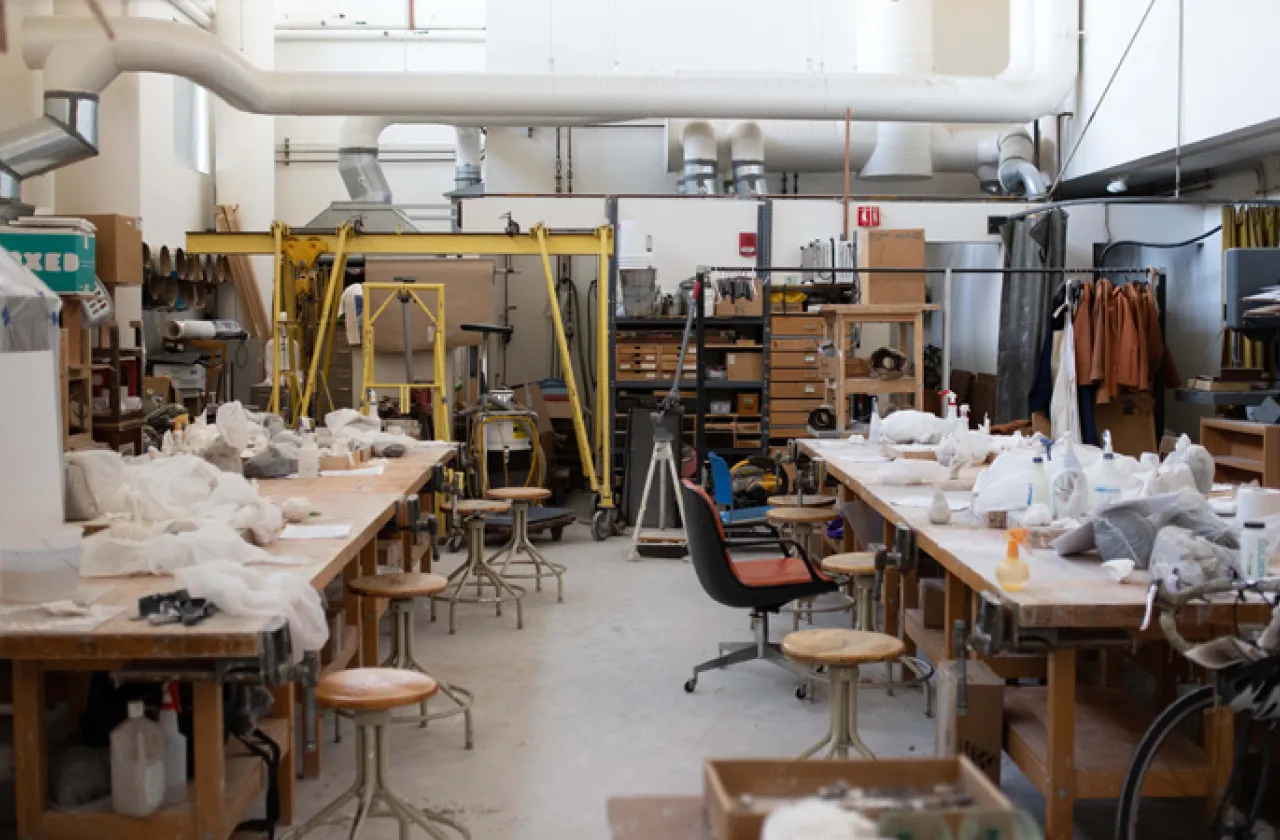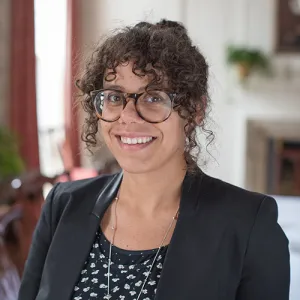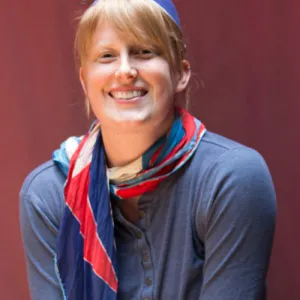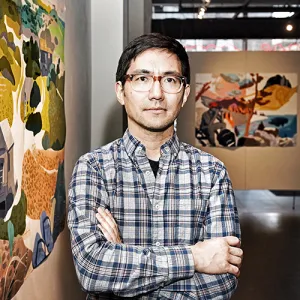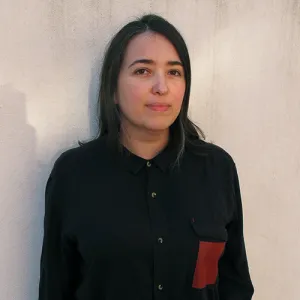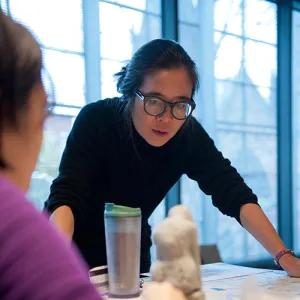Studio Art
Students may take studio courses in many media, from sculpture and drawing to video, photography and printmaking. We also offer interdisciplinary courses organized around conceptual questions and themes. Classes take place in studios with spaces for hand-setting type, using bandsaws, creating installations and designing computer graphics. All senior art majors have their own studio spaces.
In the Studio
Studio art at Smith gives students hands-on opportunities to delve into six exciting areas of concentration.
Requirements
All graduating Art majors and minors will:
- develop familiarity with original works of art and/or architecture and with research tools appropriate for the discipline, including print scholarship, online databases, and various reference materials;
- communicate their ideas effectively in written, oral and (as appropriate) material form, including public presentations that rely upon the display of visual images or artwork;
- engage a range of disciplines in their work, in the spirit of a liberal arts education.
Art Studio and Architecture majors and minors will:
- demonstrate fluency in practices or techniques in the current field of practice for at least one medium (e.g, painting, installation, photography, digital media);
- demonstrate proficiency in an extensive and pertinent vocabulary for describing their own work and the art historical antecedents with which it shares relationships;
- demonstrate familiarity with professional practices and global perspectives within the cultural landscape of contemporary art;
Assessment (majors and minors): Students will be assessed through periodic faculty and peer critiques of their work and reviews of their written and oral abilities.
Assessment (majors only): Students will create a body of work for final exhibition that results from deep engagement in the process of making and demonstrates an awareness of the contemporary and historical context in which the work exists. This work will be evaluated through peer, faculty, and external critique.
Students will also complete the major with a professional-level, documented portfolio of their work, including both visual and written materials.
Art History majors and minors will:
- learn to read original objects, architectural settings, and written scholarship analytically and synthetically;
- demonstrate familiarity with the different ways that spaces, monuments, and objects have intersected with lived and imagined experiences throughout history and the world over;
- demonstrate expertise in self-directed research, including fluency with a range of methodologies and debates across the discipline.
Assessment: Students will be assessed in classes, through faculty reviews of their written and oral abilities.
Students will also complete a capstone research seminar that results in a sustained piece of original research, presented in oral form and a paper of ca. 15 pages, to be evaluated by the faculty.
Requirements
Eleven 4-credit courses
- One 100-level studio art course: ARS 162, ARS 163 or ARS 172 (Note that certain upper-level courses indicate specific 100-level course prerequisites.)
- ARH 110: Art and Its Histories
- One course with contemporary emphasis, relating to art history, visual studies or film and media studies, to be chosen in consultation with adviser.
- One additional art history course at the 200 level or 300 level
- Five additional 4-credit studio art courses
- One course may be at the 100 level
- Students may work across media areas but must consult with their adviser to take a series of courses (usually three) to reach the advanced level in at least one of the following. Each area is sequenced differently but will require at least one 300-level course.
- drawing
- digital media
- graphic arts (printmaking or typography)
- installation
- painting
- photography
- sculpture
- ARS 385
- ARS 399
- Students who complete their degree requirements in the fall semester should take ARS 399 in their junior year. All other students should take ARS 385 and ARS 399 in their senior year.
- Students entering Smith with a 5 on the AP art history exam may choose to be exempted from ARH 110, replacing it with another art history course at the 200 level or above.
- No course counting toward the fulfillment of the major or minor may be taken for an S/U grade.*
- Courses associated with a concentration (such as IDP, MUX, etc.) cannot be counted toward the completion of the art major.
*In response to unprecedented circumstances, the Department of Art is allowing up to two Satisfactory/Unsatisfactory (S/U) courses from Academic Year 2020–21 to count towards the major.
Students entering Smith College in the fall 2023 semester (or after) are subject to the above requirements. All others have the option of following this set of requirements, or the one in effect when they enrolled in the College or declared their major.
Declaring a major in studio art
A student may declare a major in studio art any time after completing the introductory (100-level) studio art requirement and one additional studio art course. Prior to declaration, students must complete a portfolio review, scheduled each semester prior to the advising period. Students who receive a negative evaluation will be encouraged to take an additional studio course or courses and resubmit their portfolio at a subsequent review time. Students who receive a negative evaluation may resubmit their portfolios in subsequent reviews up to and including the last portfolio review available during their sophomore year. These students will be offered suggestions for strengthening their portfolios through additional studio coursework in the same or other media represented in the portfolio. The additional studio courses will count toward fulfilling the major requirements.
Mapping the major in studio art
Upon receiving a positive portfolio evaluation, a student should select and meet with a studio art adviser to discuss the student’s interests and studio work to date and to select a media from those listed above. The student and adviser may design a sequence of studio courses that draws from several areas of focus.
Portfolio Review for Entry into the Studio Art Major
Students must complete the Portfolio Review in order to declare the Studio Art major. We offer a review prior to registration each fall and spring semester. To participate, students should have already completed or be in the process of completing their second Studio Art course.
This review is only for those wishing to declare the Studio Art major and is announced mid-semester. A review is not held for the Studio Art minor or the Architecture major or minor.
What to expect
The Portfolio Review is not approached as a weeding-out process but rather a threshold into the Studio major. Students will sign up for a 15-minute time slot to share their work with a group of Studio Art faculty. Students are not expected to give a formal presentation on each piece—the assembled faculty will look over the portfolio, ask questions, and discuss with each student their approach to the work on view.
The review also acts as a brief advising session about how students might continue through the major. When a student is invited into the major after the review, the Chair can assist with finding an adviser if the student has not already sought one out.
How to prepare
Once the review is announced (via email, poster, and the Department home page), fill out the linked form and sign up for a time slot.
Come to the review with 10-15 works from Studio Art classes taken at Smith or college-level studio art classes taken at another institution. Original pieces, photo/video documentation, or a combination of both are all acceptable. If showing photos or other digital media, please bring a laptop/device as there will not be a computer in the room.
We look forward to seeing your work!
For questions about sign-up, contact Tatjana Mackin.
Advisers
Lee Burns, Alexis Callender, Lindsey Clark-Ryan, John Slepian, Fraser Stables and Lynne Yamamoto.
Designed for students who wish to focus on studio art, although they are majors in another department. With the assistance of a minor adviser, a student may construct a minor with primary emphasis on one area of studio art or may design a minor that draws from several areas of concentration.
Requirements
One 100-level course selected from the following: ARS 162, ARS 163, ARS 172 and five additional courses in studio art, of which at least three must be at the 200-level and at least one must be at the 300-level.
Adviser
Lindsey Clark-Ryan
Graphic arts seeks to draw together the department’s studio and history offerings in printmaking and typography into a cohesive unit.
Requirements
- ARS 163
- ARH 247 or 268
- Any four ARS classes from: 269, 270, 272, 275, 369, 372, 376 of which oneshould be at the 300-level or a continuation of one medium.
Incoming students with any level of experience should plan to enroll in one of our 100-level course offerings. Those interested in a portfolio review for possible placement out of ARS 163 Drawing I should contact Tatjana Mackin to make a 10-minute Zoom appointment on Tuesday, Aug. 26. Please express your preference for a morning (9:30-11 a.m. EDT) or afternoon (6-7 p.m. EDT) time slot. Students should prepare a diverse sampling of 12-15 pieces. Directions for uploading images will be sent along with a confirmed time and a Zoom link. We will make an informed evaluation; however, this should be seen as primarily a friendly advising session. Very few exceptions from Drawing I are given, and we recommend students with all levels of experience take the course.
Honors
Studio Art Director of Honors: Alexis Callender
An honors project is an 8-credit class focused on independent research during a student’s senior year. Interested students should meet with the director of honors to discuss the proposed project and, if appropriate, develop a proposal before the end of their junior year. The college's official requirements, guidelines and deadlines are available on the class dean’s website.
All candidates will present their work in a public presentation to the art department, in late in April or early May.
Study Abroad
Studio Art Faculty
Contact Art: Studio Art
Hillyer Hall
Smith College
Northampton, MA 01060
